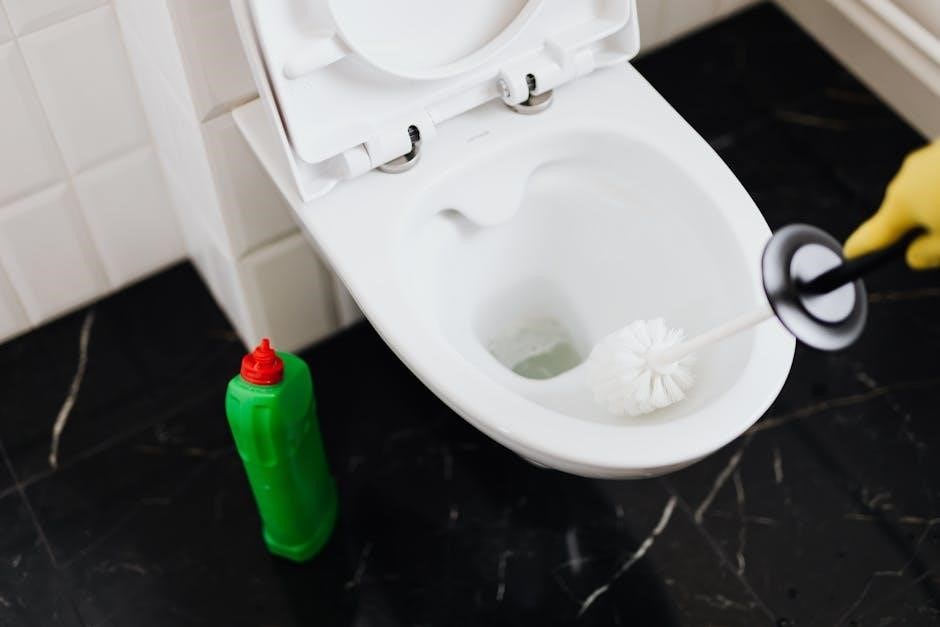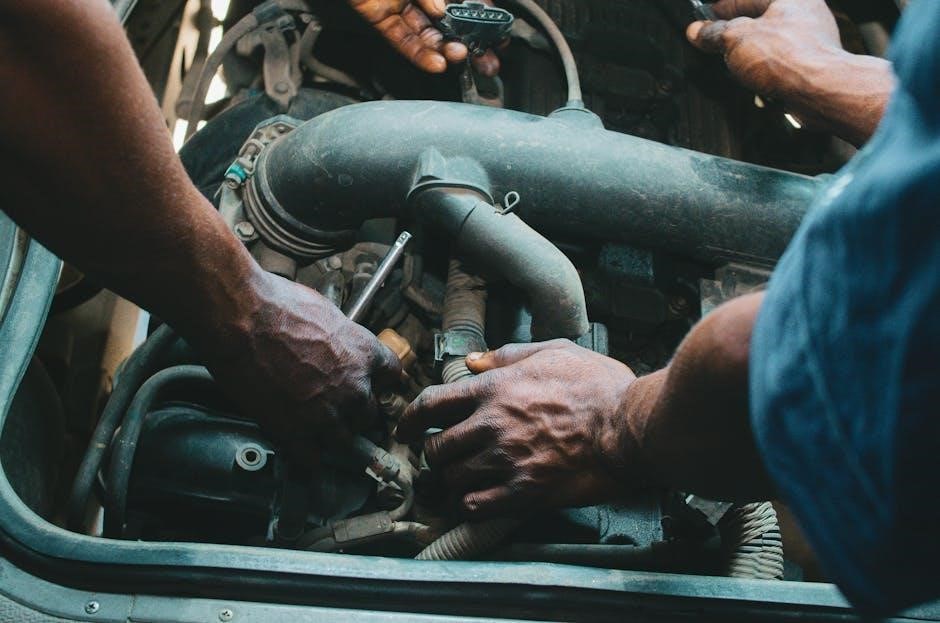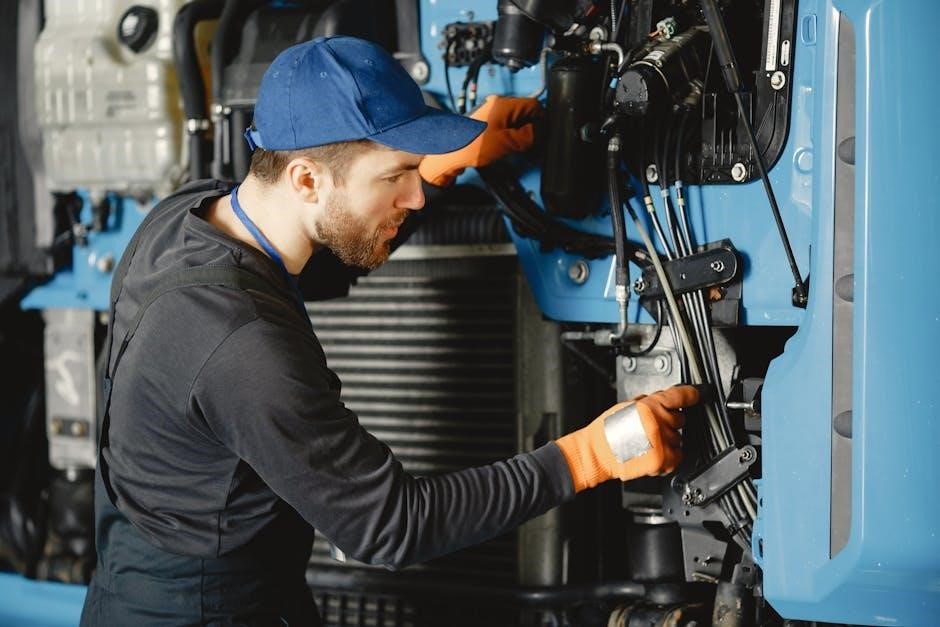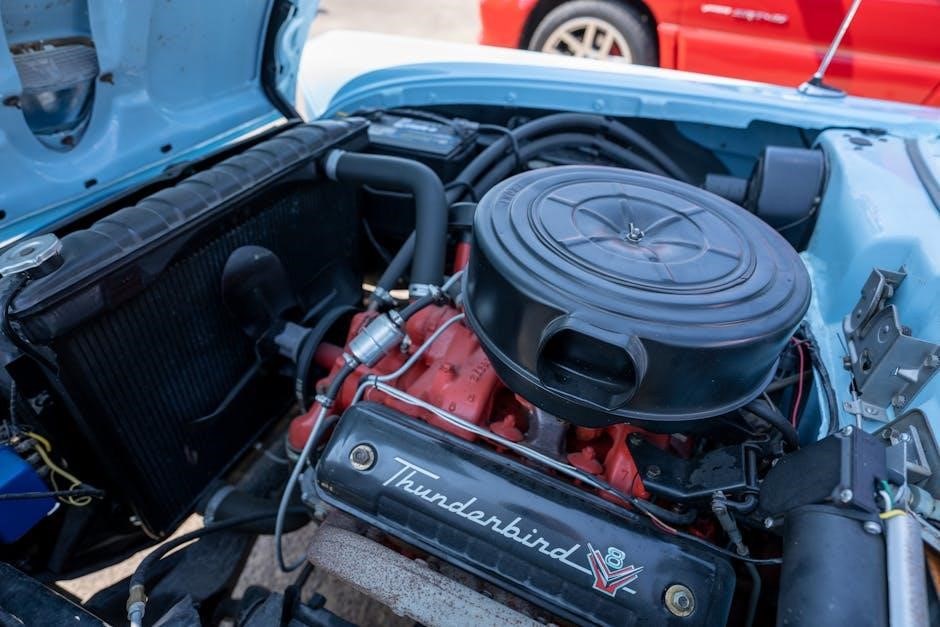Bissell SpotClean Pro User Manual: A Comprehensive Guide
Welcome! This comprehensive guide details the Bissell SpotClean Pro, assisting you in achieving a deeper clean for carpets, rugs, and upholstery.
Explore features, safety precautions, and maintenance tips to maximize your cleaning experience with this powerful portable carpet cleaner.
Bissell supports the Pet Foundation, and purchases aid their mission – enjoy a clean home while contributing to a worthy cause!
Congratulations on selecting the Bissell SpotClean Pro, a powerful and versatile portable carpet cleaning solution designed for tackling everyday messes and stubborn stains throughout your home. This innovative device offers a convenient way to deep clean carpets, rugs, upholstery, and even hard surfaces, providing a fresh and revitalized living space.
The SpotClean Pro distinguishes itself with its compact design and targeted cleaning capabilities, making it ideal for spot treatments, pet accidents, and quick cleanups. Bissell, a family-owned brand, prioritizes delivering effective cleaning solutions, and this model embodies that commitment.

This user manual will guide you through the setup, operation, and maintenance of your SpotClean Pro, ensuring optimal performance and longevity. Remember to read all instructions carefully before use to maximize its cleaning potential and enjoy a consistently cleaner home.
Unboxing and Component Identification

Upon opening your Bissell SpotClean Pro box, carefully verify that all components are present. You should find the SpotClean Pro machine itself, a specialized hose designed for targeted cleaning, and a variety of tool attachments for diverse surfaces and stain types.
Inspect the included tank – this is where your cleaning solution and water mixture will reside. Locate the power cord and ensure it’s in good condition. Also, confirm the presence of a sample size of Bissell Spot & Stain cleaner formula to get you started.
Refer to the included quick start guide for a visual representation of each component. Familiarizing yourself with these parts before assembly will streamline the setup process and ensure proper operation of your new cleaning appliance.
Safety Precautions and Warnings
Important Safety Instructions: Before operating your Bissell SpotClean Pro, carefully read all instructions to minimize risks. This appliance is for indoor use only and should not be used on flammable materials. Always disconnect the cleaner from the power outlet before performing maintenance or troubleshooting.
Never operate the device with a damaged cord or plug. Avoid pulling or carrying the cleaner by the cord. Do not immerse the machine in water. Keep children and pets away during operation;

Use only Bissell cleaning solutions to prevent damage and maintain optimal performance. Failure to follow these warnings could result in electric shock, injury, or damage to the appliance.
Setting Up Your SpotClean Pro
Initial Setup: Begin by carefully removing your Bissell SpotClean Pro from the packaging. Locate the clean and dirty water tanks; the dirty tank is typically translucent. Fill the clean water tank with warm tap water and your preferred Bissell cleaning solution, following the solution’s dilution instructions.
Securely attach the hose to the designated port on the unit. Ensure a snug fit to prevent leaks during operation. Select the appropriate cleaning tool for your surface – the tough stain tool is ideal for stubborn messes, while the standard tool suits general cleaning.
Plug the SpotClean Pro into a grounded electrical outlet, and you’re ready to begin!
Understanding the Controls and Features
Key Controls: The Power Button initiates operation; a single press turns the unit on, and another turns it off. The Spray Trigger, located on the handle, dispenses cleaning solution when depressed, activating the spray function. Understanding these is crucial for effective cleaning.

Hose and Attachments: The flexible hose extends your reach, while various Tool Attachments cater to different surfaces and stain types. The SpotClean Pro boasts specialized tools for tackling pet stains and general messes.
Familiarize yourself with these features to optimize your cleaning process and achieve the best results. Always read all instructions before use!
Power Button and Operation
Initiating Operation: The Power Button on your Bissell SpotClean Pro is straightforward – a single press activates the machine, indicated by a power light. Pressing the button again immediately shuts the unit off. Ensure the tank is properly installed and contains clean water and solution before powering on.
Operational Considerations: Always unplug the cleaner when not in use and before performing any maintenance. Avoid continuous operation for extended periods to prevent overheating. The power button’s simplicity ensures easy start and stop functionality during cleaning sessions.
Read all instructions before using your cleaner!
Spray Trigger and Solution Dispensing
Activating Spray: The Spray Trigger, located on the handle, controls the dispensing of cleaning solution. Pulling the trigger releases a targeted spray onto the stained area, initiating the cleaning process. The trigger requires consistent pressure for continuous spraying.
Solution Control: The SpotClean Pro mixes water and cleaning solution automatically. Ensure you’re using a BISSELL Spot & Stain Cleaner formula for optimal results. Avoid using excessive solution, as it can leave residue. Proper solution dispensing is key to effective stain removal.
Keep plenty of genuine BISSELL cleaning formula available!
Hose and Tool Attachments
Versatile Reach: The Hose extends the cleaning reach of your SpotClean Pro, allowing access to stairs, upholstery, and hard-to-reach areas. It connects securely to the main unit, providing flexibility during cleaning.
Tool Variety: Included Tool Attachments enhance cleaning capabilities. These tools tackle specific messes – a tough stain tool for stubborn spots, and a specialized pet stain tool for pet accidents. Ensure proper attachment for optimal performance.
Explore available accessories to further customize your cleaning experience. Shop for products and accessories directly from BISSELL for guaranteed compatibility!
Using the Bissell SpotClean Pro for Basic Cleaning

Quick Spot Treatment: For everyday spills and messes, the SpotClean Pro excels. Fill the clean tank with appropriate BISSELL cleaning solution, and position the tool over the stain;

Trigger Activation: Activate the Spray Trigger to dispense cleaning solution directly onto the affected area. Utilize the Power Button to initiate suction, lifting away dirt and liquid.
Multiple Passes: Perform several passes over the stain, observing the water lifting. Continue until the area appears clean. Remember to read all instructions before using your cleaner!
Deep Cleaning Carpets and Rugs
Pre-Treatment is Key: For heavily soiled carpets and rugs, pre-treating stubborn stains is recommended. Apply BISSELL Spot & Stain cleaner and allow it to dwell for a few minutes.
Slow and Steady: Employ slow, overlapping passes with the SpotClean Pro’s tool attachment. This ensures thorough cleaning and optimal dirt extraction. Focus on high-traffic areas for best results.
Dual Tank System: The SpotClean Pro’s dual tank system keeps clean and dirty water separate, preventing re-soiling. Regularly check the dirty water tank and empty as needed. Live in the moment, not the mess!
Stain-Specific Cleaning Techniques
Pet Accidents: Utilize a specialized pet stain formula. Blot up excess liquid, then saturate the area with cleaner. Allow dwell time, then extract with the hose attachment. Repeat if necessary for odor elimination.
Red Wine: Act quickly! Blot immediately, avoiding rubbing. Apply a red wine stain remover, let sit, and extract. Multiple passes may be needed to fully lift the stain.
Coffee & Food Spills: For fresh spills, blot and apply a general-purpose cleaning solution. For set-in stains, pre-treat and use the brush attachment for agitation before extracting.

Pet Stain Removal
Addressing pet messes requires a targeted approach. Begin by thoroughly blotting up any excess liquid with a clean cloth, avoiding any rubbing motion that could spread the stain. Next, select a BISSELL formula specifically designed for pet stains and odors.
Saturate the affected area, ensuring the solution penetrates deep into the carpet fibers. Allow a dwell time of 5-10 minutes for the formula to break down the stain and neutralize odors.
Utilize the hose attachment and carefully extract the solution, observing the lifted stain. Repeat the process as needed until the area is clean and odor-free.
Red Wine Stain Removal
Act quickly! Red wine stains require immediate attention for optimal results. Begin by blotting up as much excess wine as possible with a clean, absorbent cloth, working from the outside in to prevent spreading.

Apply a BISSELL stain-fighting formula directly onto the affected area, ensuring thorough saturation. Allow the solution to dwell for 3-5 minutes, enabling it to break down the wine’s pigments.
Employ the SpotClean Pro’s spray trigger and suction power to extract the wine and cleaning solution. Repeat this process several times, using fresh solution each time, until the stain is visibly diminished or removed.
Coffee and Food Spill Cleanup
Address spills promptly to prevent staining and lingering odors. For coffee or food spills, initially scrape away any solid residue with a dull knife or spoon, being careful not to spread the mess further into the fibers.
Utilize the SpotClean Pro’s hose and appropriate tool attachment to target the spill area directly. Apply a BISSELL cleaning solution formulated for general stain removal, saturating the affected area.
Activate the spray trigger and suction to lift the spill and solution. Repeat the process, alternating between spraying and extracting, until the area appears clean and dry. Consider a second pass with clean water for residue removal.
Maintaining Your SpotClean Pro
Regular maintenance ensures optimal performance and extends the life of your Bissell SpotClean Pro. After each use, clean the tank thoroughly with warm water and a mild detergent, rinsing completely to remove any remaining solution.
Inspect the hose for blockages and flush with water if necessary. Periodically replace the filter – a clogged filter reduces suction power. Refer to the manual for recommended replacement intervals.
Proper storage is crucial; ensure the tank is empty and dry before storing in a cool, dry place. Avoid wrapping the cord tightly to prevent damage. Consistent care keeps your SpotClean Pro ready for any mess!
Cleaning the Tank and Hose
Maintaining a clean tank is vital for preventing odors and ensuring optimal cleaning performance. After each use, detach the tank and empty any remaining solution. Rinse thoroughly with warm water, ensuring no residue remains.
For deeper cleaning, use a mild detergent and allow the tank to air dry completely before reattaching. Inspect the hose for blockages; detach it and flush with water to remove any debris.
A blocked hose reduces suction. Regularly cleaning both the tank and hose prevents build-up and keeps your Bissell SpotClean Pro functioning efficiently, delivering powerful cleaning every time.
Filter Replacement
Regular filter replacement is crucial for maintaining suction power and preventing dust and allergens from recirculating. The Bissell SpotClean Pro utilizes a filter that requires periodic changes, depending on usage frequency.
Check the filter after each use and replace it when visibly dirty or if suction diminishes. A clogged filter strains the motor and reduces cleaning effectiveness. To replace, locate the filter compartment (refer to your model’s diagram).
Remove the old filter and insert a new, genuine BISSELL replacement filter. Ensure a secure fit. Replacing the filter ensures optimal performance and extends the life of your SpotClean Pro.
Storage Instructions
Proper storage extends the life of your Bissell SpotClean Pro. Before storing, ensure the tank is completely empty and clean to prevent mold or mildew growth. Remove any remaining solution from the hose and attachments.
Allow all components to dry thoroughly before storing. Wrap the power cord loosely around the cord wrap feature to avoid damage. Store the SpotClean Pro in a cool, dry place, away from direct sunlight and extreme temperatures.
Keep the unit upright to prevent any residual water from potentially damaging internal components. Secure the hose and tools with the provided clips or storage features.
Troubleshooting Common Issues
If your SpotClean Pro isn’t turning on, check the power cord connection and ensure the outlet is functioning. For reduced suction, inspect the tank for fullness and clean the filter – a clogged filter is a frequent cause.
If the spray trigger isn’t dispensing solution, verify the tank has sufficient cleaning fluid and the spray nozzle isn’t blocked. Unusual noises may indicate a foreign object in the hose; disconnect and inspect.
If stains persist, try a different Bissell cleaning formula or repeat the cleaning process. Always refer to the full user manual for detailed guidance and safety information.
Bissell Cleaning Solutions Compatibility
To maintain your Bissell SpotClean Pro’s performance and warranty, using compatible cleaning solutions is crucial. Bissell recommends its own line of Spot & Stain formulas, specifically designed for portable carpet cleaners like this model.
Avoid using soaps, detergents, or abrasive cleaners, as these can damage internal components and void your warranty. While some multi-purpose cleaners may seem suitable, they often leave residue or cause foaming issues.
Always check the solution label to ensure it’s safe for carpet and upholstery. Bissell offers specialized formulas for pet stains, red wine, and general cleaning – choose the best option for your needs!
Warranty Information and Customer Support
Your Bissell SpotClean Pro is covered by a limited warranty against defects in materials and workmanship. The warranty period typically lasts for one year from the date of purchase, but please retain your proof of purchase for verification.
The warranty doesn’t cover damage from misuse, abuse, or unauthorized repairs. For complete warranty details, refer to the separate warranty document included with your product.
For customer support, visit the Bissell website or contact their helpline. They offer troubleshooting assistance, replacement parts, and warranty claim processing. Bissell prioritizes customer satisfaction and provides resources to ensure a positive cleaning experience.
Available Accessories and Where to Purchase
Enhance your Bissell SpotClean Pro’s versatility with a range of available accessories! These include specialized cleaning tools, extra tanks, and extended hoses for reaching difficult areas. Bissell offers formulas specifically designed for pet stains, tough messes, and general carpet cleaning.

You can purchase these accessories directly from the Bissell website, major retailers like Amazon, Walmart, and Target, and authorized Bissell dealers. Always ensure you’re buying genuine Bissell parts to maintain your cleaner’s performance and warranty validity.
Explore Bissell’s online store for exclusive bundles and promotions on accessories, maximizing your cleaning power!




























































